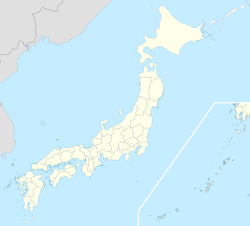
https://www.google.com/search?sca_esv=6ffc7db0e36d41bf&sxsrf=AE3TifPsuqnyngbolKVAUWOyEJPQTe1x0A:1756010722009&udm=2&fbs=AIIjpHxU7SXXniUZfeShr2fp4giZ1Y6MJ25_tmWITc7uy4KIeuyr9ljWioGWIw0oasFed3q5v-jrTO4UFmLjWc-eQrSDAn5yCiUOywCEMyD2GzPsD4p6NxyE0nWcubdFo_geguuEzTyhb5YnZGp9oc-5cJgdOWVqSlpwqlRFBrxaDT9YXk-Cdymu63-zeABH1e7STtPakvrAsNBjNpc49sGHXpjHEuW6dw&q=inami+japan&sa=X&sqi=2&ved=2ahUKEwjhpbra0aKPAxUshKgCHXErIcMQtKgLegQIDhAB&biw=1098&bih=483&dpr=1.75
井波町(Inami-machi)是日本富山縣東礪波郡的一個町。 2003年,町人口估計為9,972人,人口密度為每平方公里380.61人。總面積為26.20平方公里。
2004年11月1日,井波町與福野町、城端町、井口村、上平村、平村和利賀村(均來自第十二郡)以及福光町(來自第五郡)合併,成立南礪市。 [1]
歷史
伊波町以其廣闊的木雕區而聞名,其起源可追溯至1390年伊波別院瑞泉寺的建造。這座完全由木材建造並裝飾著精美雕刻的寺廟,曾長期遭受火災,後來以更奢華的方式重建。 [2] 該寺廟最近一次重建是在1885年的明治時期,如今是北陸地區最大的木結構淨土宗寺廟。 [3] 1965年4月1日,它被正式指定為「伊波町重要文化遺產之一」。 [3]
由於其悠久的歷史,木雕是伊波町的主要產業。在18世紀中葉重建寺廟期間,京都的木雕師被派往協助重建。這些助手開啟了伊波木雕的新紀元,當地木匠開始創作比以往專注於寺廟雕刻更豐富的雕刻作品。 [4] 如今,木雕師們使用超過200種不同的鑿子來完成他們的作品。他們被認為是日本技藝最精湛的木雕師。 [2]
伊波木雕區的聲音於1996年入選「日本百佳音景」之一。 [5]
Inami (井波町, Inami-machi) was a town located in Higashitonami District, Toyama Prefecture, Japan. In 2003, the town had an estimated population of 9,972 and a density of 380.61 persons per km2. The total area was 26.20 km2.
On November 1, 2004, Inami, along with the towns of Fukuno and Jōhana, the villages of Inokuchi, Kamitaira, Taira and Toga (all from the 12th District), and the town of Fukumitsu (from the 5th District), merged to create the city of Nanto.[1]
History
Inami is most well known for its extensive wood carving district which traces its origins to the construction of the Inami Betsuin Zuisen-ji Temple in 1390. This temple, entirely made of wood and ornamented with intricate carvings has a long history of burning down only to be rebuilt in a much more extravagant fashion.[2] The temple was most recently rebuilt during the Meiji period in 1885, and now exists as the largest wooden Pureland Buddhist temple in the Hokuriku region.[3] It was officially designated as "one of the prefecture's important cultural assets" on April 1, 1965.[3]
Because of its rich history, wood carving is the major trade in Inami. During the reconstruction of the temple in the mid 18th century woodcarvers from Kyoto were dispatched to help in the rebuilding process. These helpers ushered in a new era of woodcarving in Inami, and local carpenters began to produce a more varied assortment of carvings than the temple pieces they had focused on previously.[4] Presently, the woodcarvers use over 200 different variations of chisels to complete their works. They are considered to be the most skilled woodcarvers Japan.[2]
The sound of the Inami woodcarving district was chosen in 1996 as one of the 100 Soundscapes of Japan.[5]
Joel來談日本
美國富裕層旅遊雜誌《Condé Nast Traveler》於 4 月公布「全球最寧靜 50 地」,日本共有 4 地入選,其中 富山縣南砺市井波 首度受到國際矚目。井波以 250 年以上歷史的「井波木雕」聞名,小鎮約 8 千人口中有 150 人是木雕師,街頭時常迴盪著鑿刻聲與木香。
南砺市雖因世界遺產「五箇山合掌造聚落」而知名,但井波名氣相對有限。2024 年起隨著外國郵輪靠港富山,井波開始迎來更多訪客。居民自發組織手作歡迎活動,安排在瑞泉寺觀看雕刻師實演、體驗木雕與書法,並在八日町通品嚐地酒、購物。遊客雖僅停留約一小時,但對「溫暖款待」印象深刻。2025 年 4 月更迎來單日最多 300 名訪客。
東京井波會前副會長中嶋勝彦表示,因口碑與「靜謐 50 選」加持,井波正被世界認識。海外媒體的曝光對地方觀光助力顯著,例如《紐約時報》近年陸續推薦盛岡、山口、富山為「必去之地」。在觀光公害問題突出的今天,「靜謐」正成為旅遊新指標,有助推動外國旅客往地方分散。
井波的魅力也延伸海外。2025 年 11 月,普林斯頓大學將舉辦以井波木雕為主題的研討會,並計畫在美國多個城市巡展,源於該校學生親訪後的推廣。井波的木雕文化,正以低調卻穩健的步伐,將「靜謐之美」傳遞至國際。











